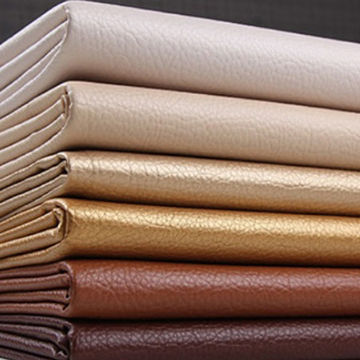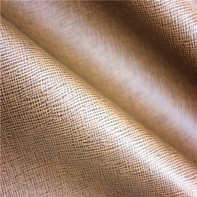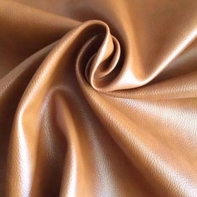Fact Check
What is Faux Leather
What is faux leather? It’s a question that comes up a lot given how prominent fake leather has become in manufacturing.
If you’ve ever ridden in a car, sat on a couch, picked up a book, or gone shopping for a jacket, you’ve likely encountered this substance before, maybe even in ways that have left you question whether what you’ve just touched is real leather or not.
But, again, what actually is faux leather?
Is it organic? Synthetic?
How does it stack up against real leather? Is it just a waste of money?
We’ll try to answer all these questions and more as we take a look at the history of faux leather, what it’s made of, and how it compares to the real thing.
What is Faux Leather?
Faux leather is a designation for any number of synthetic fibers meant to mimic the look and feel of genuine leather.
In general, “faux leather” specifically refers to the material used on things like chairs and couches, with leatherette and koskin denoting the material utilized in making automotive upholstery and consumer goods like bags, respectively.
Fake leather products are usually made from one of two materials, polyurethane or polyvinyl chloride.
History of Faux Leather
Since the 1940’s, America has made use of synthetic leather materials in the form of vinyl. The original faux leather products were shoes and car-related fixtures like upholstery.
By the 1950’s, however, chemical manufacturers like DuPont began synthesizing polyurethane, eventually moving into the faux leather industry, as well. These days, both products are utilized for a number of purposes, though their original function as fake leather substitutes still remains.
PU Vs. Vinyl
Vinyl and PU each have their strengths and weaknesses when compared to each other. As they both have their uses, neither can really be considered “better” than the other.
Polyurethane (PU)
Polyurethane is created by coating a material (cotton, polyester, or even genuine leather being popular options) with a special polymer and treated to more closely resemble animal hide.
PU products are generally softer, utilized in clothing and car seats due to their flexibility and breathability making them more pleasurable to the touch.
Because of the way they’re produced, PU products generally resemble real leather better and retain much of the supple and flexible qualities one would expect from it.
Polyvinyl chloride (Vinyl)
Polyvinyl chloride, on the other hand, is more useful for products that need to be easy to clean and water resistant, making them the first choice for hospital furniture and similar buildings that focus on hygiene.
Vinyl upholstery is created by covering strong polyester material with a mixture of PVC and phthalic acid, creating a tight seal.
While generally better for book bindings and things that require constant cleaning, vinyl can be uncomfortable when in the form of furniture, especially if left to sit in the sun for long periods, and often cracks after continued use.
Real Vs. Faux Leather
In the real vs. faux leather debate, the best indicator of a winner is what your objective happens to be.
Overall, though, if you’re looking for leather, then real leather will always be your best bet. That being said, there are still a few trade offs that can put one ahead of the other in certain situations.
Sample of Faux Leather Jacket


Versus the Real Deal


Price
For one thing, faux leather is usually cheaper to buy than real leather. Whether this can be seen as a sign of decreasing quality is up for debate, though you can generally rank prices for equal amounts of materials with authentic leather at the top, vinyl at the bottom, and polyurethane in the middle.
Given how important money is, especially when working with different types of fabrics and materials, this could be one of the most important considerations in choosing between real or faux leather.
Durability
Additionally, both real and faux leather are extremely durable, though in different ways. As many are well aware by now, real leather has a reputation of being sturdy, dependable, and long lasting.
Naturally tear resistant, real leather is the kind of material you want to use if you fear being injured or having your clothes damaged, as leather’s incredibly heartiness is designed specifically to keep the wearer safe.
For faux leather, its durability lies in its ability to resist scratches that would otherwise tarnish the appearance of real leather. Additionally, it has comparable longevity.
Polyurethane, in particular, isn’t prone to cracking or peeling like low quality bonded leather, though vinyl is actually more prone to do so with frequent use. It is also more stain resistant and tolerant of UV light, and is less likely to ruin if drenched in water (though there are several ways to save real leather that has faced this issue).
Manufacturing
Faux leather can also be easier to work with, as its greater susceptibility to being cut actually works in its favor when it comes to sewing. It’s also less likely to show needle marks, and thread more easily blends into it for a more seamless look. Given that it’s a synthetic material, it can also be printed with different textures and patterns if the designer wishes.
Copy Cat
However, the biggest difference between real and faux leather comes from the fact that, no matter how good it may be, it is only a copy of the real thing.
Fake leather, even PU, is only so flexible or breathable. Those who have regularly worn real leather and switch to faux leather will be able to tell the difference quite easily do to the differences in how it feels to wear each material.
Additionally, despite its similar appearance, faux leather’s consistency actually works to its disadvantage in the long run. While faux leather, barring any damage, will have the same appearance more or less for its entire lifespan, real leather becomes more beautiful over time as it ages.
Patinas do not form and create the lustrous look on faux leather the same way it does with aged leather.
Final Thoughts
While it’s not fair to say either real or faux leather is definitively “better” than the other, each one does have clear advantages and disadvantages compared to the other.
Even so, if your goal is to have leather, whether as clothing, upholstery, accessories, or whatever else you need it for, then you should probably buy leather rather than an imitation.
Simply put, while faux leather isn’t a bad choice, only real leather can deliver in some ways that synthetic replacements just can’t stand up to.



